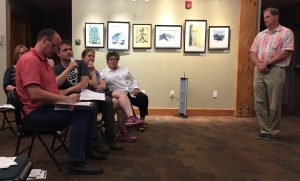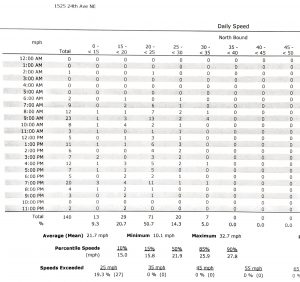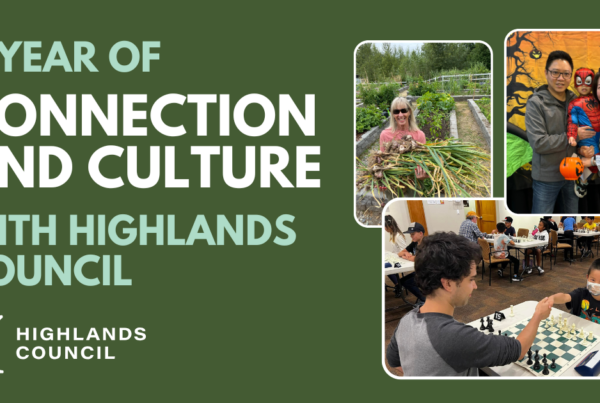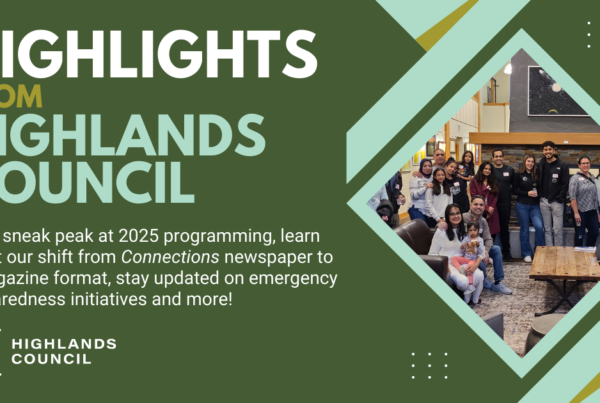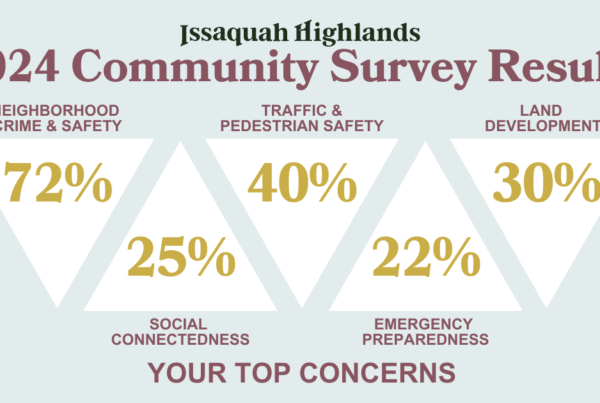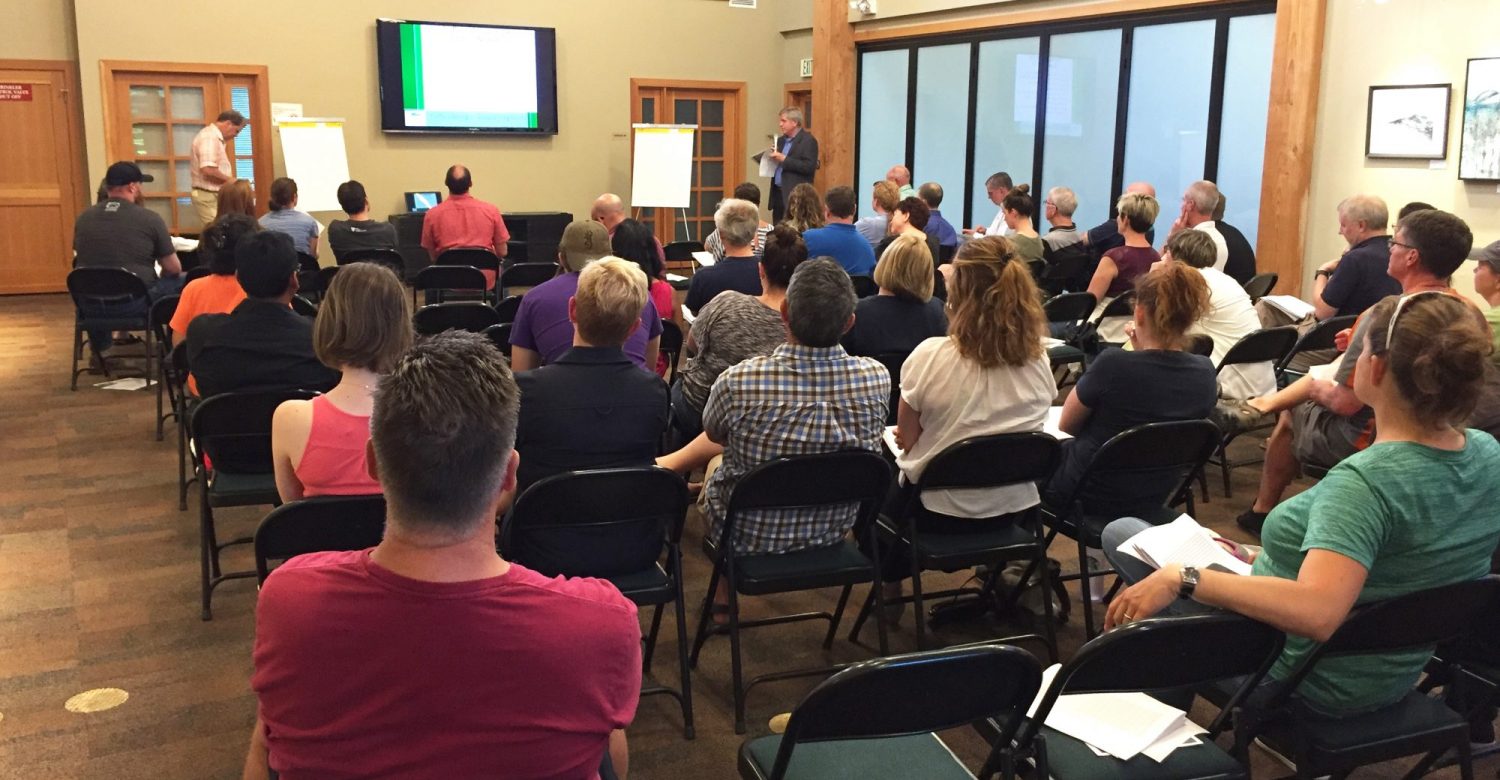
By Nina Milligan, Communication Manager, Highlands Council
On Wednesday about 50 neighbors gathered in Blakely Hall on a sunny evening. What could be so important to take residents away from family and summertime activities? Speeding.
“Speeding is a social behavior, which is hard to change.”
Sheldon Lynne, Director, PWE
This meeting was called by the City of Issaquah to talk about “traffic calming” in Issaquah Highlands. They had collected data in June 2017 on driver behavior on 24th and 25th Avenues NE, south of Park Drive. Even though most drivers go the speed limit or less, at times the data showed many cars speeding, some over 70 mph. The City wished to share this data and discuss with the community ideas about how to slow drivers down on our neighborhood streets.
The City was represented by leadership from all affected departments:
Kurt Seemann, Transportation Manager
Sheldon Lynne, Director, Public Works Engineering
Pam Fox, Project Coordinator, Public Works Engineering
Bret Heath, Director, Public Works Operations
Ryan Smith, Community Resource Officer, Issaquah Police
Greg Tryon, Deputy Chief, Eastside Fire and Rescue
Issaquah City Council members also were in attendance:
Stacy Goodman, Council President
Bill Ramos, Chair, Council Infrastructure Committee
Paul Winterstein, Member, Council Infrastructure Committee
And from the City of Issaquah, Urban Village Development Commission: Geoff Walker, Chairman (a 19 year IH resident).
The IHCA was represented by Jim Young, IHCA Board of Directors President, and Rossie Cruz, IHCA Board of Directors Vice President. Representing Highlands Council was Executive Director, Christy Garrard, along with Nina Milligan and Vicki Grunewald.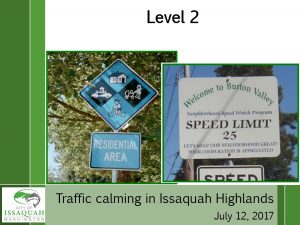
The City brought not only street data, but also ideas about how to slow drivers down. But we want some people to drive fast… police, ambulance drivers, fire fighters. Traffic calming infrastructure also slows down emergency responders. Just another element to consider when solving this challenging problem.
The City groups ideas for slowing drivers down into three levels:
Level 1: Neighborhood education and enforcement
Level 2: Community-specific signage, social pressure
Level 3: Infrastructure improvements such as speed bumps, medians, round-abouts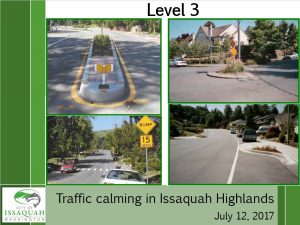
The City staff facilitated gathering ideas from the audience, passing the microphone around so all could hear. Every idea was recorded a flip chart for future reference (insert images).
Helping the audience understand the challenge of slowing drivers, Sheldon Lynne cautioned, “Speeding is a social behavior, which is hard to change. People who live in a community probably have more influence over such behavior” than the City does.
But Kurt Seeman defined a goal of the City to “Promote safe and pleasant neighborhoods.” To that he added, “This is a joint effort. Traffic calming is not something we impose on you.” He went on to explain that this effort started with a community request, wherein a resident expressed a concern and asked the city to help correct it.
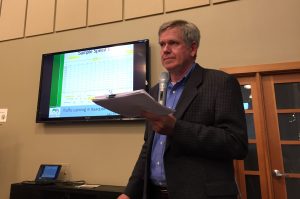
Kurk Seeman, City of Issaquah Transportation Manager, listened intently to questions about data collected on driver speeds.
Collecting data was the first step. Next was to hold this meeting to share the data and ask the residents what they’d like to do about it. And the community had ideas! Flip charts were filled with ideas from speed bumps to flashing lights at crosswalks, to more crosswalks, to stop signs, to enforcement with very high penalties to “hit them [offenders] in their pocketbooks.” This resident suggested Issaquah Highlands gain a reputation for being the most expensive place to speed in the City.
All the ideas will be reviewed by the City of Issaquah staff and leadership. Highlands Council expects them to follow up very soon. “Highlands Council was happy to help coordinate this meeting. Highlands Council is proud of the collaborative relationship we have with our City of Issaquah partners.”
City representatives emphasized that this is just the beginning. Officer Ryan Smith implored residents to call whenever they hear cars drag racing in Central Park at night. And keep calling; it might take several tries to catch the racers. Sheldon Lynne invited all to call PWE or to use the City website’s “Report a Concern” to share additional ideas or to report problems.
Expect the City to return to the Highlands with next steps and possibly another meeting. Like us on Facebook to get this news the soonest.
“We are ready when they are to share information with and set up further meetings with the community as needed,” offered Garrard. “There’s a lot of momentum now. I expect for them to follow up before the end of summer.”

